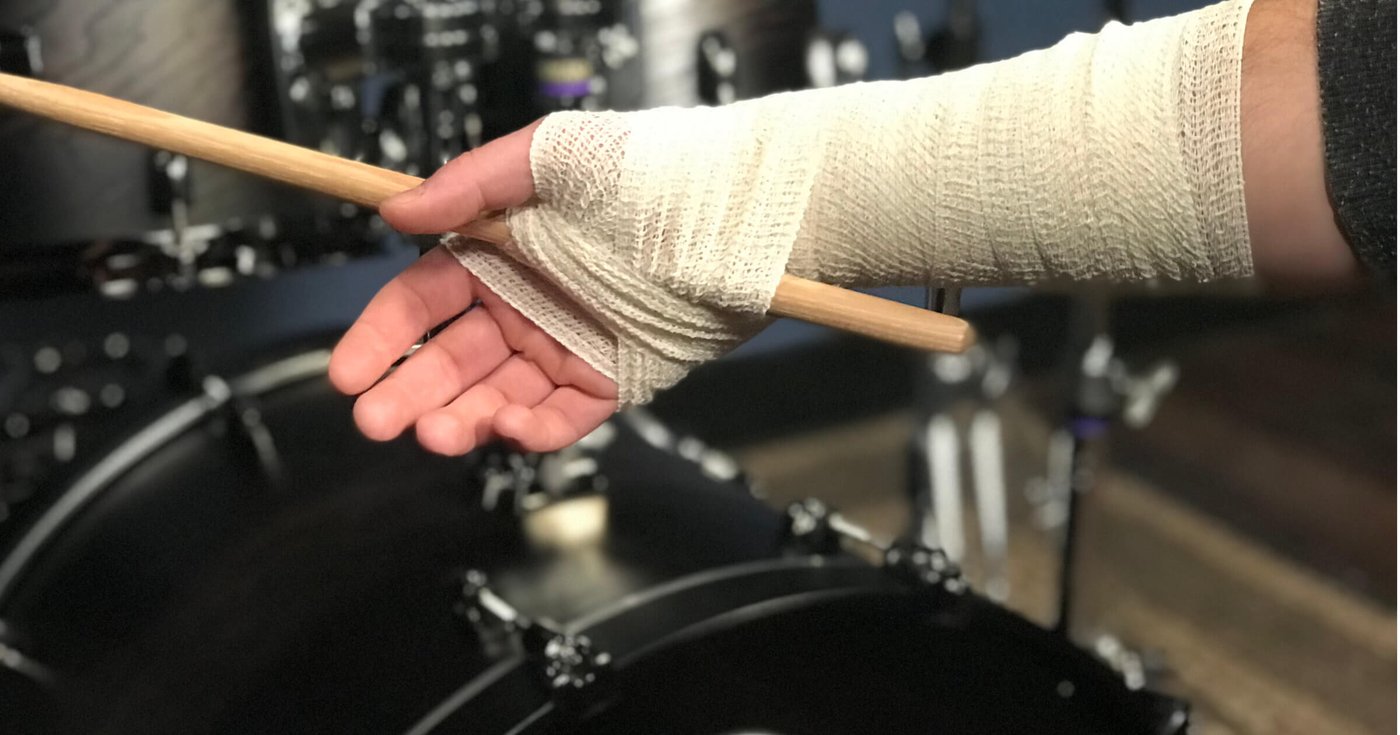
The science is pretty clear: playing the drums is a physically demanding task.1,2
Like anyone else who engages in strenuous athletic or occupational tasks, drummers run the risk of developing playing-related musculoskeletal disorders (PRMDs). These types of injuries – also known as repetitive strain or overuse injuries – include pain, weakness, numbness, tingling, or other symptoms that happen as a result of playing the drums and interfere with your ability to play the drums at the level to which you are accustomed.3 They develop over time and include conditions like carpal tunnel syndrome, tendinitis, and bursitis.
We’ve all heard of drummers who have faced potentially career-ending PRMDs. Maybe you’ve even experienced one yourself. But just how common are PRMDs in drummers? What are the most common injuries? What can drummers do to avoid them?
Although there are many anecdotes to answer these questions, there isn’t much research out there on PRMDs in percussionists, let alone research that specifically focuses on drummers.
So, I decided to do my own study to address these issues. My goal was to determine the rates and patterns of PRMDs in drummers, and to identify drummer-specific characteristics that might put drummers at risk for (or protect them from) developing PRMDs. The results will help me provide drummers with evidence-based answers to the questions I listed above.
I developed and distributed an electronic survey that included three types of questions:
Of the 831 drummers who provided usable survey responses, 68% indicated that they had experienced a PRMD at some time in their life, and 59% had experienced more than one PRMD. The upper limb (especially the wrist) and the lower back were the most commonly affected locations. The most commonly reported diagnoses were tendinitis and carpal tunnel syndrome, but only 42% of the respondents with PRMDs reported receiving a diagnosis from a medical professional.
The study confirmed that PRMDs, especially those affecting the upper limb, are a significant health problem for drummers. I’m sure many of you reading this are thinking, “Thanks, Captain Obvious!” It was worth the effort to conduct the study because I now have research evidence about PRMDs that is specific to drummers and represents a broad spectrum of ages, career stages, experience levels, and musical genres.
Tendinitis and carpal tunnel syndrome emerged as the two most frequently-received medical diagnoses. The Mayo Clinic defines tendinitis as “inflammation or irritation of a tendon”.4 It can occur in any tendon in the body, and the symptoms can include pain while moving the affected area and/or to the touch, and mild swelling.4 Carpal tunnel syndrome happens when the median nerve is compressed as it passes through the very small space through the bones of the wrist.5 The symptoms include “frequent burning, tingling, or itching numbness in the palm of the hand and the fingers, especially the thumb and the index and middle fingers.”5 An upcoming article will include more information on these injuries.
If you are experiencing symptoms (including pain) of any kind while you are playing, and especially if those symptoms persist when you are not playing, you should see a medical professional right away. The sooner you can pinpoint the problem, the better your chances are of successfully treating it and making changes that will prevent it from happening again! Also – be aware that you may need to see more than one medical professional to treat the problem. A primary care physician can give you a diagnosis, but you really need to see a rehab specialist (e.g. physiotherapist, athletic therapist) to help you recover.
*Neither Drumeo nor Dr. Azar can provide medical advice. Please go see a medical professional if you’re concerned about something! The content of this article is meant to provide you with some food for thought and some information to help you ask the right questions of your medical team.
Nadia Azar Ph.D. is an Associate Professor of Kinesiology at the University of Windsor, where she runs the Drummer Mechanics and Ergonomics Research Laboratory (DRUMMER Lab). Follow Nadia at @DrNadiaAzar or learn more here.


By signing up you’ll also receive our ongoing free lessons and special offers. Don’t worry, we value your privacy and you can unsubscribe at any time.
We use cookies for traffic data and advertising. Cookie Policy »